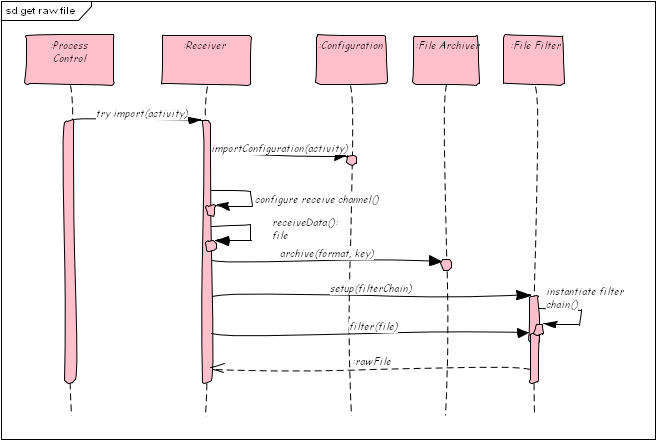6. Runtime View
6.1 Import File
One of the major use cases is Import File, which can be from both mandator and partner.
Such files contain always contain Client related data in configurable formats (CSV, fix-formats or XML).
We split the explanation of import file into two phases:
- Import Raw File Generic (from an external source)
- Validate the imported data and update the internal
Clientdatabase
6.1.1 Import Raw Generic
At first we explain the generic import, where no campaign-specific activities are executed.
This concerns configureReceiveChannel and especially the instantiateFilterChain() activities.

- tryImport:
ProcessControlstarts the import. Theactivityis a uniqe ID identifying the mandator, the campaign and the activity. importConfigurationgets all required configuration informationconfigureReceiveChannelprepares everything needed to get data from an external source. For example, URL, filenames and authentication credentials for an external ftp server need to be configured here.archivesends the file to the (configured) archive system, usually an optical write-once non-erasable backup archive.setupinitializes the required filters, e.g. unzip or decrypt.filterexecutes all the filters
The steps 5+6 are a dynamically configured pipes-and-filter dataflow subsystem. You find some more info in the filter concept in section 8.
6.1.2 Validate File
Prerequisite: Data has been imported from external source, has been successfully filtered (i.e. decrypted and decompressed). See previous section (Import Raw Generic).
The diagram below contains error handling.
In good cases there will be no errors.
Calls to ImportErrorHandler are only executed if errors occur!

